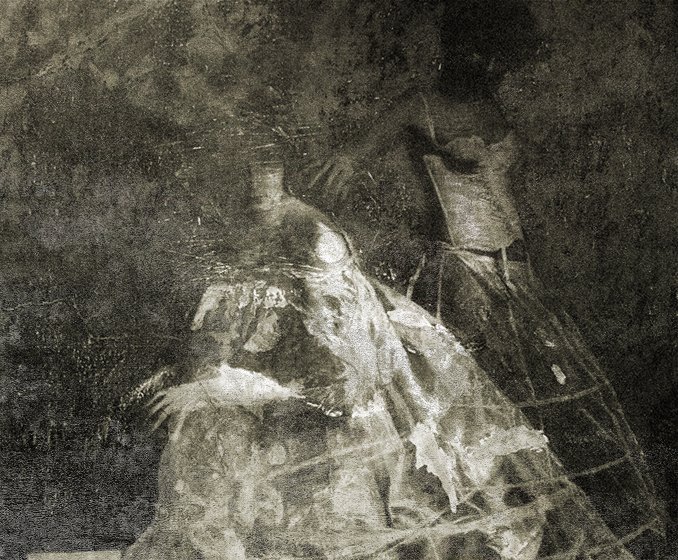Endless formal search in the painting of Antoine Drumbeat
Written by Laura Moylan
26/9/2023
Antoine Drumbeat.
A Homage to Velázquez
Oil on canvas, 24’’ x 33’’ (60.9 cm x 83.8 cm), 2021
Sergey Levitskiy works at the intersection of different media and is discovering an increasingly more comprehensive range of plastic language from year to year. With equal perfection, he works with painting and sculpture, printing and handmade techniques on paper, and creates spatial objects and photographs, closely exploring the possibilities of a shaping method. The freshness of the creative approach manifests itself in the moment of representation. Considering painting to be a relevant genre regardless of time, Levitskiy goes beyond perfectly honed technique, goes beyond the plane into form, and turns painting into an object.
The exhibition Around Myself continues the artist's exploration of form. Levitskiy again works in the tondo format: all the paintings are made on a round canvas or carry the image of a circle, which invariably travels from series to series, from work to work. Tondo does not impose a framework of perception on the viewer, has no contextual restrictions and acts in the presented works as a unifying principle, a return to simple forms. From Levitskiy's point of view, the idea of contemplative perception of the world is the most natural and effective position for an artist in relation to what is happening, as extremely rational ideas are not suitable for artistic practice.
Antoine Drumbeat. Contemplation
Oil on canvas, 55’’ (139.7 cm), 2023
In today's art world, one must possess more than just basic knowledge and understanding to appreciate the work fully. It has become a highly specialised field where viewers require guidance from either the artist or a knowledgeable curator to understand the context and meaning behind the piece properly. This process includes access to articles, explanations and proper preparation. However, painting and graphics are the least traumatic genres for the viewer from a visual point of view; this is an attempt to return a person to the contemplation of what is happening.
The works presented in the Around Myself project clearly show how the artist continues to reflect on structures, patterns, three-dimensionality and two-dimensionality of surfaces. Levitskiy does not hide the technology of his thoughts. The kitchen of his reflections adorned rosettes made from canvases opened with a cutter. By cutting the surface of the canvas, the artist reflects on the structure of the painting and goes beyond its limits, turning it into a kind of visual object, emphasising its materiality in space. This is a technique in the best traditions of Levitskiy, who is accustomed to mixing different techniques.
Antoine Drumbeat. Reflection
Oil on canvas, 55’’ (139.7 cm), 2022
This is not just deconstruction; it is a constructed situation where a cut refutes the painting inside the canvas, unexpectedly strengthening its structure. By performing actions that are destructive to the surface of the painting, the artist further affirms it and materialises it in space.
The range of topics, as before, is deliberately limited. Inside the canvas, Levitskiy creates a symbolic space, the monochrome and ruined nature of which reflects the subjective experience of time: architecture without human presence, statues destroyed to the ground, piles of rubbish and figures that seem to be on the other side of impenetrable glass. Sergey Levitskiy is one of those artists who masterfully work with emptiness, which cannot be seen from the outside but can only be felt while inside this flow, a detached, timeless hover in the air. Like any artist, he is interested in the secrets of the universe, the cosmogony of the world: the moon rises above Levitskiy's unsteady objectivity, shading the dusty relief with its dim light.
Laura Moylan is a writer and moving image curator based in London, and a runner-up in the Film and Video Umbrella and Art Monthly Michael O’Pray Prize.
The Michael O’Pray Prize is a Film and Video Umbrella initiative in partnership with Art Monthly, supported by University of East London and Arts Council England.






